Olympic athletes face a wealth of overwhelming obstacles—pushing themselves to their furthest extent of mental and physical exertion, finding the time and support for the hours of training necessary to rank among the best in the world, and bearing the weight of a nation’s aspirations on their shoulders. In addition to these challenges, some of the athletes from sub-Saharan African countries (as well as other developing countries) face obstacles even more complex, including limited sport and training infrastructure, and low funds for international travel and expensive equipment. The 2016 Summer Olympic games in Rio is no exception for so many of these athletes. Below are unique athletes representing sub-Saharan African countries who have overcome these obstacles for their chance to compete on the world stage.
Sub-Saharan Africa is highly represented on the new refugee team
Sub-Saharan Africa is sending 697 Olympians to the games this year, making up 6 percent of the total Olympic population—even though sub-Saharan Africa makes up nearly 13 percent of the world population. Over half of the athletes from sub-Saharan Africa represent only five countries (Figure 1). Eight African athletes, however, will compete for the first-ever refugee team, which participates under the Olympic flag. Although the athletes only hail from four countries, the team symbolizes the more than 21 million refugees around the world (UNHCR). Half of the refugee team hails from South Sudan, which has been suffering from a civil war and continued instability in recent weeks. Almost 900,000 South Sudanese have fled the fledging country since December 2013. Two athletes originally come from the Democratic Republic of the Congo and one comes from Ethiopia. The other two have fled the violence in Syria. Six of the 10 athletes competing on the refugee team will be chasing history in track and field competitions. Joining them will be two swimmers and two judo athletes.

Given these athletes’ perseverance despite the many impediments they have encountered as refugees, their presence at the games is particularly inspiring. As International Olympic Committee President Thomas Bach proclaimed at the Opening Ceremonies, “This will be a symbol of hope for all the refugees in our world, and will make the world better aware of the magnitude of this crisis. It is also a signal to the international community that refugees are our fellow human beings and are an enrichment to society.”
Inaugural athletes of South Sudan
South Sudan, the world’s youngest nation, has its first-ever team competing in the Olympics this year. The team is composed of three track and field athletes, one of who, Guor Marial, will be competing in the men’s marathon. Mariel is the only one on the team racing in an event overlapping with an athlete on the South Sudanese-dominated refugee team. He will be competing with Yonas Kinde, a marathon contestant originally from Ethiopia. The two other athletes, Santino Kenyi and Margret Rumat Hassan, will be competing in the men’s 1500m and the women’s 200m races, respectively. Although Santino Kenyi is only 16 years old, he views his participation in the games as paving the road for future South Sudanese athletes and as an tool for peace. South Sudan became independent from Sudan on July 9, 2011 through a referendum where an almost unanimous 98.83 percent of the population voted for independence. Since December 2013, civil war has ravaged the new nation and led to the deaths of over 300,000 people. According to Voice of America, “Kenyi believed sport is one way to unite his broken nation.” He has stated, “My message to my fellow South Sudanese, my brothers and sisters who are outside, is let us be united and let us be together, let’s together we can build this nation and let us be united, we carry the flag of South Sudan for peace.”
Zimbabwe’s women’s soccer team, the Mighty Warriors
Sub-Saharan Africa has sent two women’s soccer teams to Rio this year: the Mighty Warriors from Zimbabwe and Banyana Banyana from South Africa. Notably, Zimbabwe’s Mighty Warriors—considered a major underdog in the qualifiers—have proceeded to their first ever global soccer tournament.
From the very start, the Mighty Warriors faced serious adversity, not only in their personal lives, but also as part of the team: All women on the team play soccer part-time—they must hold other jobs due to a lack of financial support. In addition, “dehumanizing camping conditions” at away games, sexual abuse allegations, and unpaid allowances are just a few of the trials that have plagued the team. A lack of funds for plane tickets led to the forfeit of an Olympic qualifying match in Abidjan, Cote d’Ivoire, costing the team valuable group play points. After facing sanctions and possible disqualification, they then lost their first match against the Lionesses of Cameroon two to one. However, they won the second match one to zero, and with the two to two aggregate score, the Mighty Warriors pushed themselves through to Rio.
With a difficult draw, (Canada, Germany, and Australia), the Mighty Warriors were not able to make it out of the first round of the Olympic Games. Although they lost to all three soccer powers in their bracket, the Mighty Warriors have certainly made a memorable and respectable debut into the global arena.
Economics of the Summer Olympics
Given sub-Saharan African countries’ unique challenges to developing internationally competitive teams and sending them to the Olympic stage, do these countries as a whole face a distinct disadvantage at the games? According to analysis done by Goldman Sachs and scholars from Dartmouth and Yale, developed nations, and most importantly, nations with a high overall GDP, are better able to supply the funds for the athletes, training, and travel, as well as often provide better infrastructure for training, creating an advantage for their athletes. But how much does a nation’s economic performance influence its Olympic performance? GDP per capita of a nation provides a little bit of information about its outcomes in the Olympic Games—although it’s worth noting that this is a simplistic measure and several more sophisticated models (like the models noted above), incorporating population and other variables, have been developed on this topic. In comparing GDP per capita and total medal counts, there is great variability and unpredictability in performance (Figures 2, 3, and 4).

Figure 3 demonstrates that the United States, Russia, and China are clear outliers with higher shares of Summer Olympics medals won that their GDP would suggest. Some argue that the political structures and history of these countries has led to this deviation from the norm, speculating that “…countries accustomed to treating the Olympics as a measuring stick of national greatness continue to do so, even if it’s a comparatively more expensive proposition for them” (O’Brien). A large population can also more than compensate for a lower GDP per capita, for the supply of potential elite athletes is much larger. While there seems to be a trend in GDP per capita vs. Summer Olympic medal count, especially when removing the outliers of the United States, Russia, and China, the regression r-squared, which measures the accuracy of predictions, is relatively insignificant, at only 0.2137. This low r-squared indicates, then, that GDP per capita might not be a strong predictor of success at the Summer Olympics Games. Kenya is the only sub-Saharan African country to have taken home over one percent of the total Olympic medal pool in a Summer Olympics since 2000, bringing home 14 at the 2008 Beijing Games and 11 at the 2012 London Games (see the bottom left corner of Figure 3).
 Notes: Only includes countries that won 1 percent or more of the total number of medals for that year’s Olympics. Panel data for Summer Olympics 2000, 2004, 2008, and 2012. Regression line excludes China, Russia, and the United States.
Notes: Only includes countries that won 1 percent or more of the total number of medals for that year’s Olympics. Panel data for Summer Olympics 2000, 2004, 2008, and 2012. Regression line excludes China, Russia, and the United States.
Source: World Bank World Development Indicators, International Olympic Committee
When looking at the countries that collected less than 1 percent of the total medal count during the Summer Olympics of 2000, 2004, 2008, and 2012, we find almost no correlation between GDP per capita and medals won (Figure 4). All sub-Saharan Africa nations besides Kenya fall in the less than 1 percent category, with top performers shown in the table below. Although every country wants to bring home a greater share of the total medals, the unpredictability in the low performers tells a story of hope for the Olympics. A significant number of countries with the lowest GDP per capita on Earth did not take home any medals in the last four Summer Olympics. However, some did—and some took up to 1 percent of all medals. And even 1 percent of the 949 medals awarded in 2012 correspond to nine medals. According to analysis performed by PricewaterhouseCoopers on the 2012 London Games, population size, political background, and whether the country is the host country help predict medal performance and could explain these outliers.

 Notes: Only includes countries that won less than 1 percent of the total number of medals for that year’s Olympics. Panel data for Summer Olympics 2000, 2004, 2008, and 2012.
Notes: Only includes countries that won less than 1 percent of the total number of medals for that year’s Olympics. Panel data for Summer Olympics 2000, 2004, 2008, and 2012.
Source: World Bank World Development Indicators, International Olympic Committee
Top performing sub-Saharan Africa teams
A few select African countries hold most of the medals from sub-Saharan Africa. Kenya took home 14 medals in 2008 Beijing, as well as 11 medals in 2012 London. Of Kenya’s 86 total summer medals, 79 were in athletics events, or track and field, road running, and race walking events. South Africa had a couple of big years, bringing home 10 medals in both 1920 Antwerp and 1952 Helsinki. However, over the last 5 summer games South Africa has only averaged around 5 medals per Olympics. The majority of South Africa’s medals are also in athletics, however, they also took home several in boxing and swimming (19 and 15 respectively). Thirty-seven of the 46 sub-Saharan Africa countries have two total Olympic medals or less, and all of sub-Saharan Africa combined has a total medal count that is less than many individual developed countries.

The low correlation between per capita GDP and medal count provides hope for emerging African economies to prove the resilience of their spirit through athletic competition. So many of the personal stories of the African athletes–especially those on the refugee team—highlight the stark contrast between the hopefulness of the African continent and the circumstances it must overcome to compete on a global playing field, athletically and otherwise. Still, this year, like every year before, there will be countless stories of people rising above their circumstances to prove to the world that the Olympics can never be defined by statistics or ratios.
Tor Syvrud and Sarah Baker contributed to this piece.
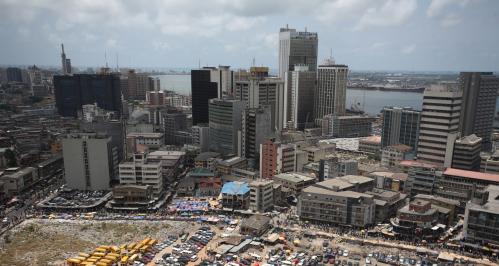
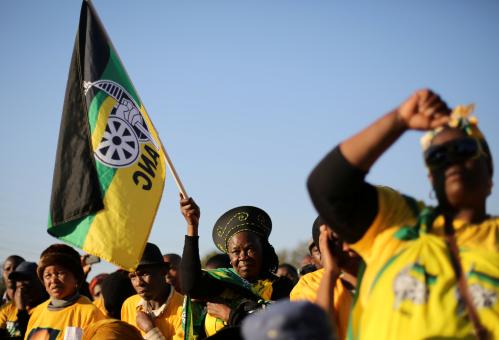
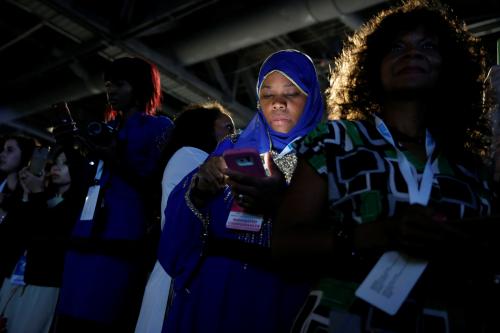
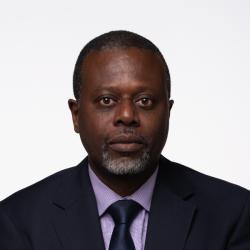


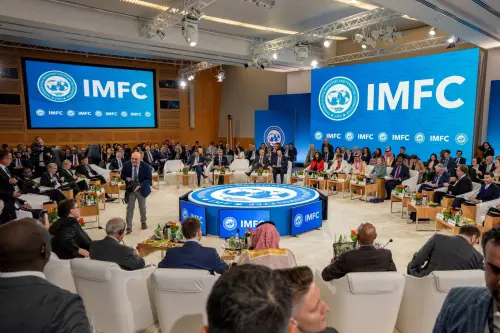

Commentary
Competing on the global playing field: Hopes and challenges for Africa in Rio
August 16, 2016